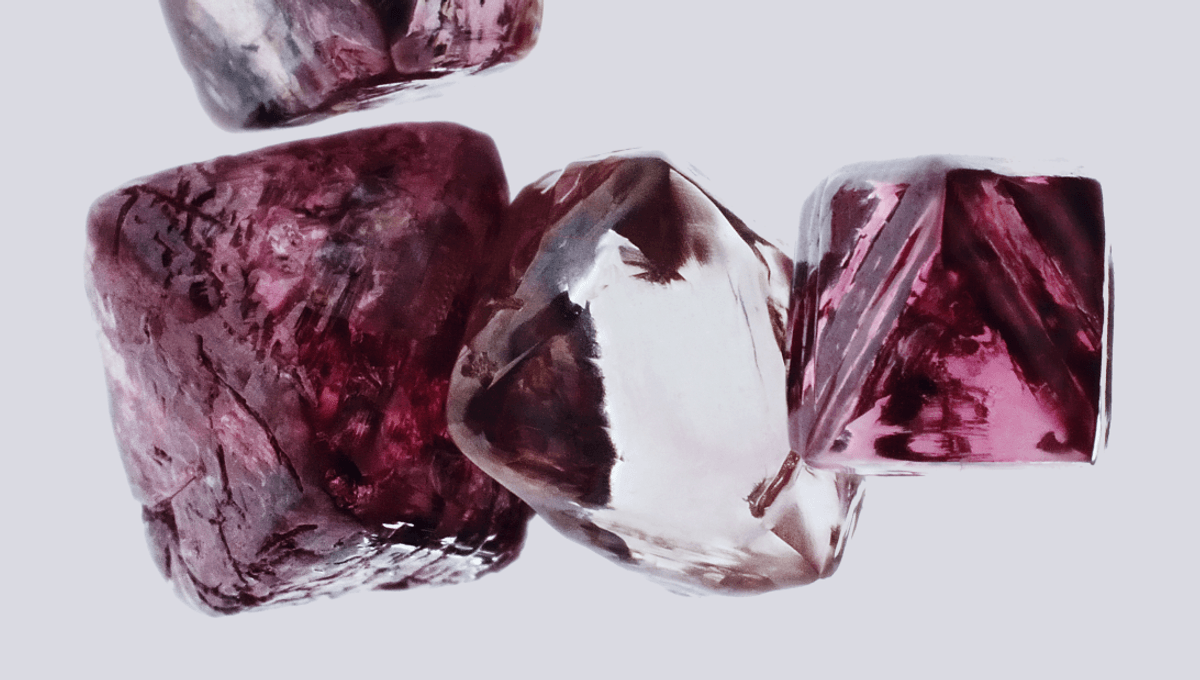
Pink diamonds are rare among Earth’s precious stones, and the exact recipe to their formation has puzzled scientists. Now, a ground-breaking discovery from Western Australia’s Argyle has identified a crucial event that needs to take place for pink diamonds to form and appear near Earth’s surface, and it may make them easier to find in the future.
We know diamonds need immense heat and pressure to form, but there are all kinds of different diamonds out there. Colored diamonds are the rarest, representing about 0.01 percent – one in 10,000 – of diamonds mined across the planet. Pink, blue, green, violet, orange, and red are all very rare, while yellow and brown are a bit more common.
Pink diamonds are thought to be the result of distortion, which is one of the three main ways in which a diamond can wind up with imperfections (the other two being impurities and damage). Distortion occurs when the lattice structure of a diamond gets twisted and bent, altering the way light is reflected so that it doesn’t appear white.
Around 80 to 90 percent of the pink diamonds found by humans were discovered in the Argyle mine, which was the site of a continental collision around 1.8 billion years ago. The collision provided plenty of pressure, meanwhile, their position near the base of the lithosphere provided plenty of heat, coming together to create just enough distortion for a range of diamonds, including pink.
But that wasn’t the whole story, as it only explains how these diamonds formed deep in the ground. In Western Australia, pink diamonds have been discovered near the surface, so how did they get there?
A third and secret ingredient for creating pink diamonds has now been revealed in a new study. It found that diamond-rich rocks from the Argyle were older than anticipated, dating their formation back to a time when the Earth’s outer layer was stretching as the supercontinent Nuna broke apart.
When it did, it freed up space for molten rock to travel up from deep within the Earth and plug the gaps. This molten rock was carrying diamonds, and it exploded as it reached the surface to create what’s known as a diatreme – a kind of volcanic pipe that’s associated with gassy explosions.
This peppered pink diamonds across an uncharacteristically surface-side locale for the rare gemstones, and this latest discovery could make it easier to find them in future. By identifying parts of the globe that have experienced stretching in the past as a result of continental breakup, we could save ourselves a trip deep underground by finding some precious pink stones just beneath the surface.
Well, no time like the present.
The study is published in Nature Communications.
Source Link: Breakthrough Discovery Identifies The Secret Ingredient To Pink Diamonds